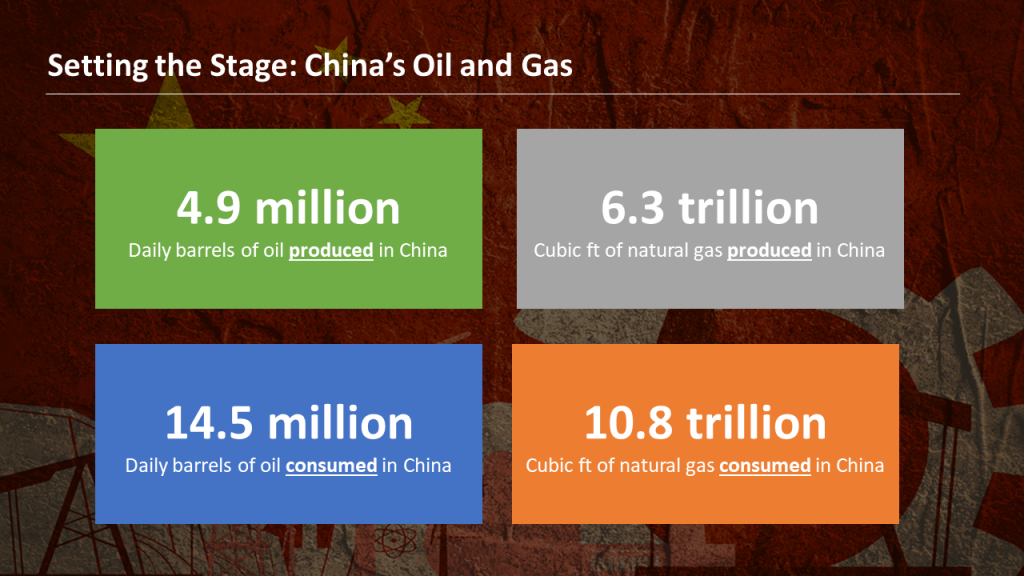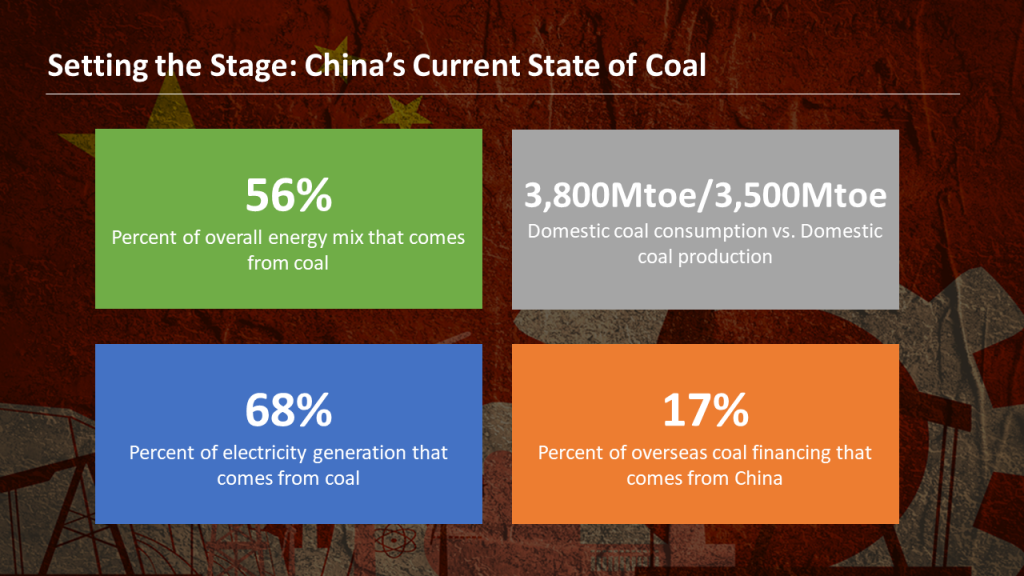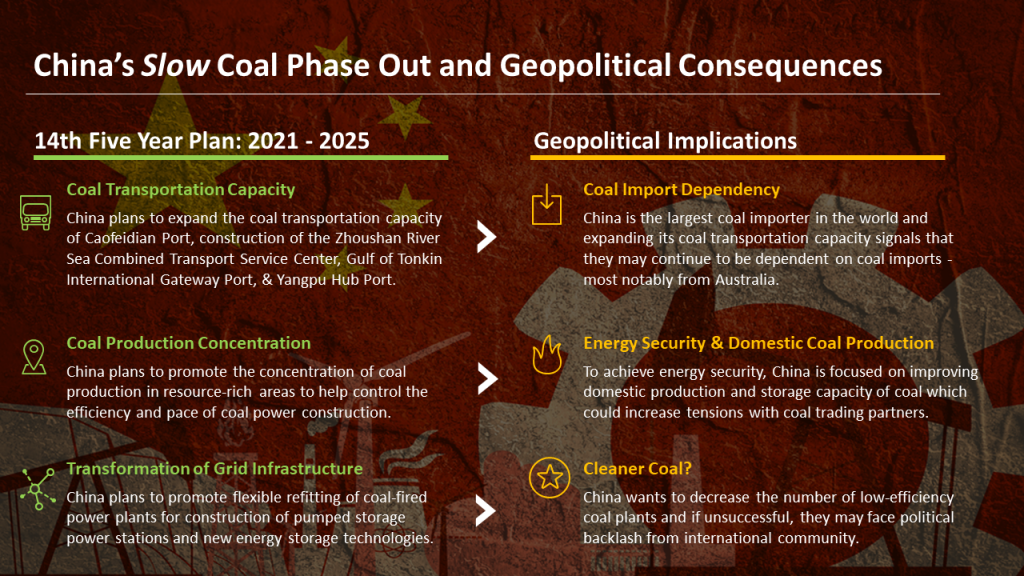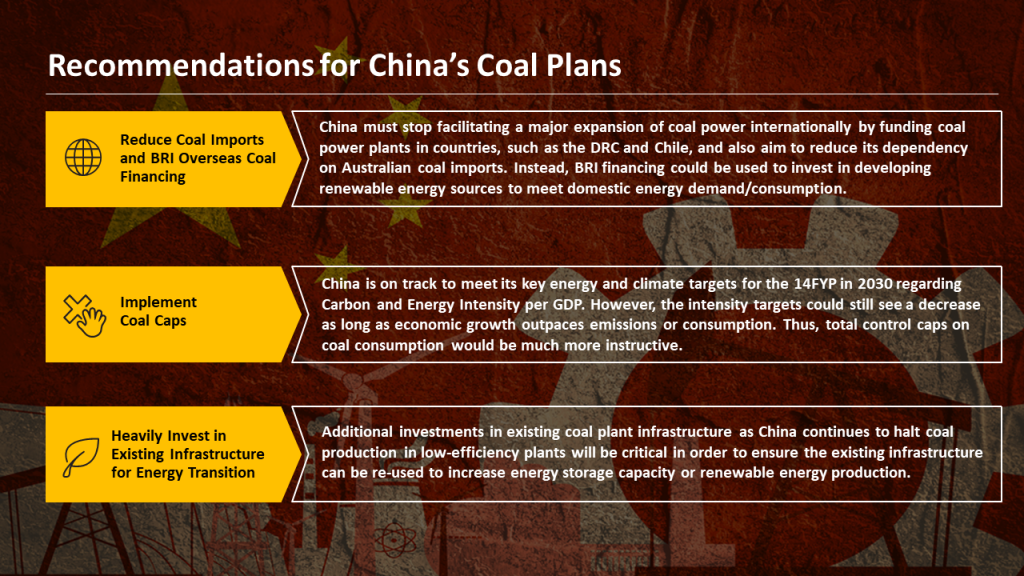Abstract
China is the world’s largest consumer of energy and emitter of CO2 emissions – nearly double that of the United States[i],[ii]. Amidst global pressure to decarbonize its economy, China is concurrently ascending as the world’s pre-eminent industrial superpower. The Chinese Communist Party’s (CCP) 14th Five Year Plan (2021-2025) makes binding directives to shrink carbon emissions while also forecasting new energy requirements for “high-quality” development and economic growth[iii]. China made a monumental 2060 net-zero pledge that stands as an ideal vision rather than a detailed roadmap, with specifics that will take years to formalize, much less implement[iv]. Along the way, China will have to reconcile its pledge with being the world’s largest consumer of coal and second-biggest consumer of oil and gas.
These contradictions in China’s energy strategy are explained by the imperative for China to maintain economic growth in order to sustain the CCP’s legitimacy. The Party set a very optimistic GDP growth target of around 5.5% this year which they seem unlikely to meet[v]. This will continue a trend of year-on-year growth slowing. If China wants to be the world’s dominant power, it needs to continue to grow. And a growing economy, one on pace to become the largest in the world by the next decade[vi], will require much more energy. Indeed, China’s GDP growth remains tightly coupled with its energy consumption which puts pressure on the CCP to acquire as many sources of energy as it can.

The fundamental constraint for the Chinese today is that they are energy insecure. A near term forecast as indicated by Figure 1 sees the CCP continuing to get these sources from coal, oil and natural gas. China’s energy portfolio today is highly dependent on both high polluting and imported energy sources – a vulnerability that has been well acknowledged by Chinese policymakers for years. This has driven many of China’s flagship geostrategic projects including the Belt and Road Initiative (BRI) which aim to secure maritime trade routes and transportation infrastructure across Africa, Asia, and Europe to guarantee energy access[vii]. However, a green transformation is in the cards over the next 40 years. China’s overall economic diplomacy and foreign policy will increasingly include discussions of energy and can help relieve some of their constraints for relying on fossil fuels. The government has a familiar playbook of interventions that is used to shore up its actual growth metrics and perceptions of its strengths, using its economic heft for both business leverage and geopolitical gain.
Thus, this paper sets out to answer the question: how can China’s energy policy help them meet their growth aspirations and achieve energy security while working towards their emission reduction targets? There are four dimensions of China’s current plans for their energy mix that will be analyzed to answer this question along with their geopolitical implications: clean energy, critical minerals, oil and gas, and coal. These represent the principal levers through which China will control their energy future. After framing the current state of these energy sectors, policy recommendations are provided on how best they can leverage the clean energy, critical minerals, and fossil fuel portfolios to achieve their triple aim of energy security, economic growth, and emission reduction.
Presentation
[i] Center for Strategic and International Studies, “How Is China’s Energy Footprint Changing?”, March 17th, 2022, https://chinapower.csis.org/energy-footprint/.
[ii] Ritchie, Hannah, Roser, Max “CO2 Emissions”, Our World in Data, 2020 https://ourworldindata.org/co2-emissions/.
[iii] Murphy, Ben “Outline of the People’s Republic of China 14th Five-Year Plan for National Economic and Social Development and Long-Range Objectives for 2035”, Georgetown Center for Security and Emerging Technology (CSET), May 12th, 2021, https://cset.georgetown.edu/wp-content/uploads/t0284_14th_Five_Year_Plan_EN.pdf.
[iv] Meidan, Michal “Unpacking China’s 2060 carbon neutrality pledge,” The Oxford Institute for Energy Studies, December 2020, https://www.oxfordenergy.org/publications/unpacking-chinas-2060-carbon-neutrality-pledge
[v] Yao, Kevin and Woo, Ryan “China targets slower economic growth as headwinds gather,” Reuters, March 5, 2022: https://www.reuters.com/markets/asia/china-cuts-2022-gdp-growth-target-around-55-2022-03-05/
[vi] Rapp, Nicolas and O’Keefe, Brian, “This chart shows how China will soar past the U.S. to become the world’s largest economy by 2030,” January 30th, 2022, https://fortune.com/longform/global-gdp-growth-100-trillion-2022-inflation-china-worlds-largest-economy-2030/
[vii] Bassler, Christopher and Noon, Ben, “Mind the Power Gap: The American Energy Arsenal and Chinese Insecurity”, Center for Strategic and Budgetary Assessments (CBSA) , August 25th, 2021, https://csbaonline.org/uploads/documents/CSBA8274_(Mind_the_Power_Gap)_FINAL_web.pdf


















